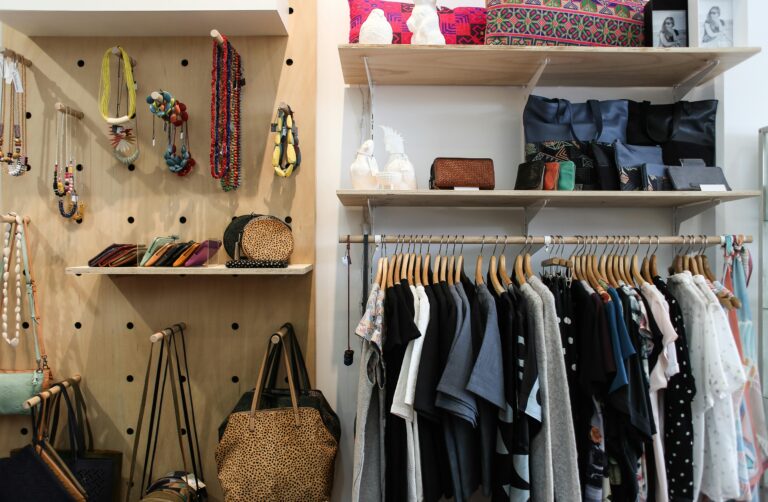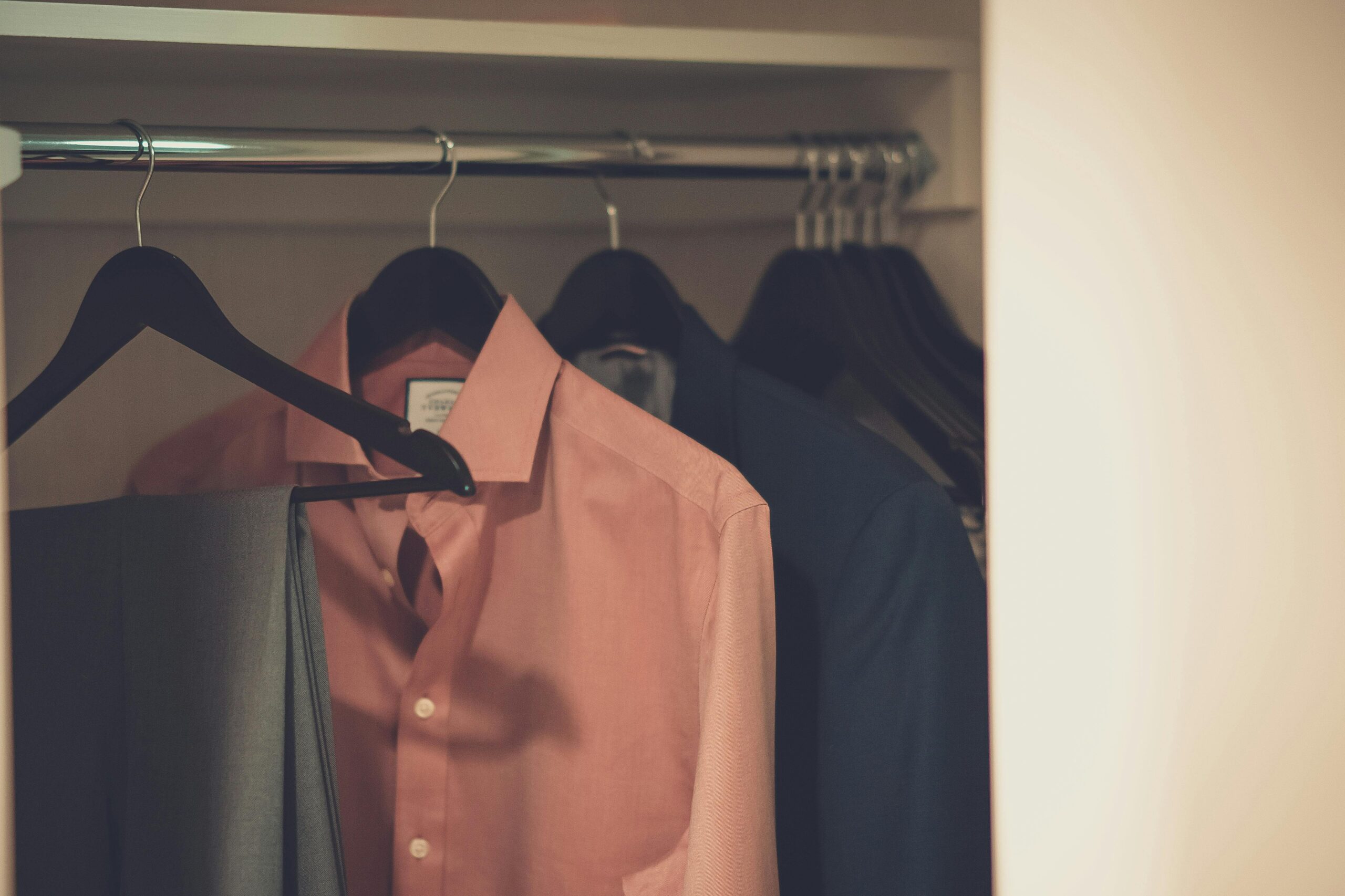When it comes to updating your closet, it’s not always about making big purchases. With some clever thinking, you can maximize your space, keeping everything in order without spending a dime. You might be surprised at how much ‘new’ space you can find in your existing setup! Here are a few ideas to get you started.

Double Your Closet Space: Ingenious Ways to Create More Room
These cost-effective methods will keep your closet organized, your favorites on display, and your bank account intact. Sometimes, however, more is needed to get an unruly closet under control. If you’re maximizing the current space you have, let’s talk through some other ways to limit what’s needed in your closet.
- An easy way to maximize your closet space is to consider introducing a double-rod closet organizer. This solution capitalizes on your closet’s height, essentially doubling the hanging space available. Strategically organizing shorter items such as blouses, shirts and trousers on the upper rod, and reserving the lower one for longer pieces including dresses and overcoats, will ensure maximum space utility.
- If you’re graced with a narrower walk-in closet or similar space, it could be practical to dedicate a wall to built ins. These structures are a smart way to cram storage for accessories, clothing, and even shoes into a previously unusable area. Cost-friendly options range from simple shelving to more complex cubbies and drawer elements. You can also find renter-friendly organizers that won’t damage the walls.
- A frequently overlooked method is the over-the-door shoe organizer. Don’t limit this versatile tool just for your shoes, it could serve as a clutter-free storage hotspot for many other items – scarves, belts, ties, even jewelry. This organizer transforms an often-neglected area into a practical, easy-to-access, and visually de-cluttered storage!
- The same idea applies to strategic usage of your out-of-the-way spaces. Ever thought about that tiny nook or awkward corner? They can be the perfect spot for bulkier items that are tricky to accommodate in regular storage spaces. Think about seasonal items, luggage, and spare bedding – stow them away until you need them, and “voila!”, your immediate space remains uncluttered.
- We often typically overlook the outside of our closets. Traditional closets with doors can naturally hide a lot, but a freestanding clothing rack could add functional and aesthetically pleasing storage to your bedroom. Budget-friendly and mobile, these racks can transform your room into an organized haven, while letting you show off your favorite pieces. Remember to display neatly; the key is a moderated selection of items and not your entire summer wardrobe!
- Strategies like using shelving to house neatly folded garments, particularly T-shirts, sweaters, and other non-delicate items, can also bring more organized calm to your closet. Shelves also make for a great showplace for accessories like hats and handbags, or bulkier objects that won’t fit in a drawer. And don’t forget, the top shelf of your closet can be a powerful ally too.
Remember, creating and maintaining an organized closet cannot be separated from decluttering. Aim to edit your clothing collection frequently, at least seasonally, to get rid of items you no longer need or use. Your space is better used showcasing the things you love and really wear. A well-curated closet not only maximizes your space but makes getting ready a breeze.
Organize by Season

Being season savvy is the smart way to utilize your closet. Categorize your clothes based on the time of year, placing your current seasonal clothing in the most accessible portions of your closet. For instance, carefully store away bulky winter apparel during summer and vice versa. This seasonal cycle, once mastered, will free up significant space in your wardrobe and make getting dressed seamless day by day.
Having a system will aid in changing over your wardrobe as seasons shift. Invest time in this process three or four times a year, and you’ll reap the rewards daily. It’s a tried and proven method that’s both cost-efficient and effective in maximizing your available closet space.
Storing off-season clothes can be a challenge, especially if you’re on a budget and don’t want to buy additional storage. A cost-effective solution is to use space you already have but might not be utilizing. Under the bed, the top shelves of closets, or unused suitcases can all be perfect places to store clothes.
Before storing your off-season clothes, make sure they are clean and dry to avoid any potential damage. You can use vacuum-sealed bags to save space and protect your clothes from dust, insects, and moisture. These bags can be purchased relatively cheaply and can be reused season after season.
Determine What Stays and What Goes

Determining which clothes to keep and which to get rid of can be a daunting task, especially if you have a large wardrobe. However, there are several strategies that can help you make this decision. One of the most effective methods is to assess the frequency of use. If you haven’t worn a particular item in the past year, it’s probably safe to say that you can let it go. This rule can be adjusted based on your personal lifestyle and needs.
Another strategy is to evaluate the condition of your clothes. Items that are worn out, faded, or damaged beyond repair should be discarded. If you’re holding onto clothes that no longer fit in the hope of losing weight or because they hold sentimental value, it might be time to reconsider. Your closet space is valuable, and it’s better utilized by clothes that fit and flatter you now.
Consider the versatility of each item. Clothes that can be mixed and matched with many other pieces in your wardrobe are more valuable than those that can only be worn in one specific outfit. Similarly, clothes that are appropriate for multiple occasions – casual, work, parties, etc. – should take precedence over items that can only be worn occasionally.
Lastly, think about your personal style and how each item fits into it. If you find that some clothes don’t reflect your current style or the image you want to project, it might be time to part with them. This can be a difficult process, especially if the clothes are still in good condition, but remember that your goal is to create a closet that works for you, not one that simply stores clothes.
Once you’ve made these assessments, it can be helpful to physically separate the clothes you plan to get rid of from those you plan to keep. This can make the process feel more manageable and give you a clear idea of how much space you’re freeing up. Remember, the goal is not to get rid of as many clothes as possible, but to create a wardrobe that fits your lifestyle and makes the best use of your closet space.
Donate Your Old Clothing and Shoes

The best thing you can do with old clothing is donate it to charities or thrift stores. There are many charities and organizations that accept gently used clothing. Goodwill and The Salvation Army are two well-known organizations, but there are also local shelters and non-profits that would appreciate the donation. Some organizations even offer pick-up services, making the process even easier. After purging your closet, the next step is to find the nearest drop-off point. So, here’s a handy list of tools offered by charitable organizations to help you locate a clothing donation point near you:
- Goodwill’s Locator Tool: Simply enter your zip code, and this tool will provide a list of drop-off locations nearest to you.
- The Salvation Army’s Donation Drop-Off Tool: This tool helps you locate the Salvation Army drop-off points in your locality.
- Purple Heart Pickup’s Location Finder: Using this tool, you can schedule a pick-up time convenient to you, or look for drop-off locations.
- American Red Cross’ Blood Donation Scheduler: Although primarily for blood donation, this tool allows you to locate their centers which often accept clothing donations as well.
Please note that it’s always best to confirm the types of donations accepted and the operating times before heading to these locations.
“Organization isn’t about perfection; it’s about efficiency, reducing stress and clutter, saving time and money and improving your overall quality of life.” – Christina Scalise
We hope you see the potential in your closet without needing to invest in costly storage solutions. These methods inspire creativity and motivate you towards creating an efficient, organized closet that meets your needs. Give them a try and see the difference – you might be pleasantly surprised by how much room you’ve been missing out on in your closet. It’s also about being resourceful, innovative, and smart with what we’ve got. After all, it’s not always about having more; sometimes it’s about making more of what we have. Happy organizing!




